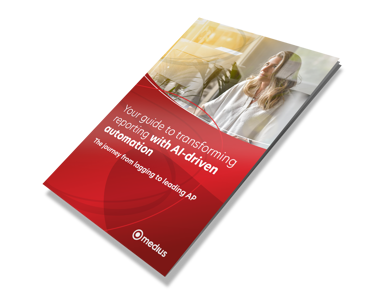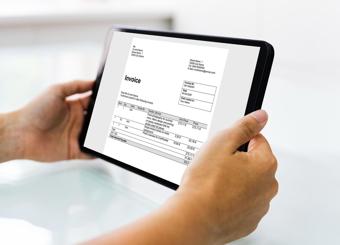How AP and procurement are strategically linked
- Introduction
- Understanding the difference between procurement and accounts payable
- Procurement vs. Accounts Payable
- The crucial connections between AP, procurement, and vendors
- Why collaboration matters for supplier relationships
- Strengthen AP and Procurement collaboration with AI
- How poor AP processes have a negative impact on the supply chain
- Key benefits of unifying AP and procurement
- Outstanding communication and service make a difference
- How to strengthen collaboration between teams
- Reporting shouldn’t be the hardest part of AP
- Show the love and watch it come back
- FAQs
Accounts Payable and Procurement are part of the same process and must work closely together to ensure efficiency, cost control, and accuracy. If the Procurement process allows uncontrolled, rogue spending, then invoices will appear as a surprise in the Accounts Payable department. These unnecessary surprises create time-consuming investigations and late payments, harming cash flow.
The entire company benefits when the AP department and Procurement recognize they are strategically linked in three significant ways:
- The liaison minimizes risk as everyone examines the data produced via AP automation to find ways to claim back lost resources, protect the organization from unnecessary harm, and use human resources for analysis rather than manual tasks.
- The team has access to real-time data for ongoing analysis beyond invoice tracking, such as supplier performance and contract optimization.
- Working together frees up cash and working capital for innovation, allowing both departments to contribute to financial agility.
Understanding the difference between procurement and accounts payable
Procurement focuses on sourcing, negotiating, and purchasing goods and services that an organization needs to operate efficiently. It ensures the company acquires quality materials at competitive prices.
Accounts Payable (AP), on the other hand, manages the financial side of those purchases by verifying invoices, processing payments, and maintaining cash flow accuracy.
When these two functions work in sync within a unified Procure-to-Pay (P2P) framework, organizations can streamline operations, improve compliance, and strengthen supplier trust.
Procurement vs. Accounts Payable
| FUNCTION | PROCUREMENT | ACCOUNTS PAYABLE |
| Primary focus | Sourcing and purchasing goods/services | Processing and paying invoices |
| Key objective | Cost savings and supplier quality | Cash flow and payment accuracy |
| Core activities | Vendor selection, purchase orders | Invoice reconciliation, payments |
| Strategic impact | Ensures supply continuity | Strengthens supplier trust |
The crucial connections between AP, procurement, and vendors
The Procurement department maintains positive relationships with vendors. Through the smart use of automation solutions, AP professionals can find opportunities to communicate with suppliers and improve overall operations. Access to data anytime and anywhere puts crucial information at the fingertips of Procurement when they need it to negotiate savings, innovations, and more with suppliers.
Late payments show disrespect and can damage vendor trust, while timely payments strengthen partnerships and may even open the door to early payment discounts. Automated AP workflows ensure vendors are paid accurately and on time, improving overall satisfaction and performance.
Why collaboration matters for supplier relationships
When AP and Procurement collaborate effectively, suppliers experience consistent communication and faster issue resolution. Transparency around payment timelines fosters mutual trust, and integrated systems ensure both departments share visibility into supplier performance. This alignment not only maintains strong relationships but also drives negotiation power for future contracts.
Strengthen AP and Procurement
collaboration with AI
When AP and Procurement work in sync, everyone wins, but constant supplier emails can slow your team down. Medius Supplier Conversations uses AI to automatically handle invoice and payment inquiries, giving suppliers instant answers and freeing your finance team to focus on strategic initiatives that drive collaboration and value.
How poor AP processes have a negative impact on the supply chain
Failure to adopt modern AP automation and poor AP processes can have a severely negative impact on the supply chain. Procurement often focuses on the “procure” aspect of procure-to-pay (P2P), but the payment side offers major opportunities for risk reduction and process improvement.
Effective AP processes focus on much more than receiving and processing invoices. When neglected, they can endanger supply continuity and vendor satisfaction. Manual data errors, slow approvals, and payment delays can all erode supplier trust and disrupt production schedules.
Key benefits of unifying AP and procurement
Cost savings
Shared visibility into contracts and invoices helps identify savings opportunities and early payment discounts.
Improved cash flow
Real-time data allows teams to plan payment timing strategically.
Risk reduction
Automation minimizes human error and strengthens audit trails.
Supplier loyalty
Consistent, transparent communication builds long-term partnerships.
Outstanding communication and service make a difference
AP and Procurement can work together seamlessly to deliver outstanding communication and service with suppliers. A good user experience improves the supplier’s perception of the organization and encourages long-term cooperation. Access to shared data enables both teams to resolve issues quickly and identify opportunities for improvement.
Having real-time insights allows AP and Procurement to strategize each supplier relationship to maximize its potential. With AP automation, the Accounts Payable team and Procurement know the status of every supplier account and can detect issues before they escalate.
How to strengthen collaboration between teams
To foster long-term alignment:
Centralize data across both functions for shared visibility.
Use metrics like invoice processing time, on-time payment rate, and supplier satisfaction.
Hold regular sync meetings to align on goals and supplier priorities.
Use data insights to identify process gaps and opportunities for improvement.
Reporting shouldn’t be the hardest part of AP
Free your finance team from manual reporting chaos. Discover how AI-driven automation turns reporting from a time sink into a strategic advantage.
Show the love and watch it come back
Showing suppliers appreciation is the best way to foster loyalty and strengthen partnerships. While supplier portals can help, adoption is often limited. Instead, AP automation enables proactive communication by sending suppliers regular invoice status updates. This transparency reduces inquiries and improves the supplier experience.
When Accounts Payable and Procurement work together as a team, supplier relationships improve to the advantage of the organization. The AP team and Procurement also demonstrate their value to leadership as strategic partners who drive profitability, enhance supplier collaboration, and safeguard the company’s financial reputation.
Frequently Asked Questions (FAQ)
Procurement sources and negotiates purchases, while AP manages payment processing and cash flow.
It eliminates silos, improves visibility, reduces risk, and ensures suppliers are paid accurately and on time.
AP automation and P2P software integrate purchasing and payments, giving both teams real-time insights into spend data and supplier performance.
Reduced costs, faster processing, better supplier terms, and stronger compliance across the organization.







